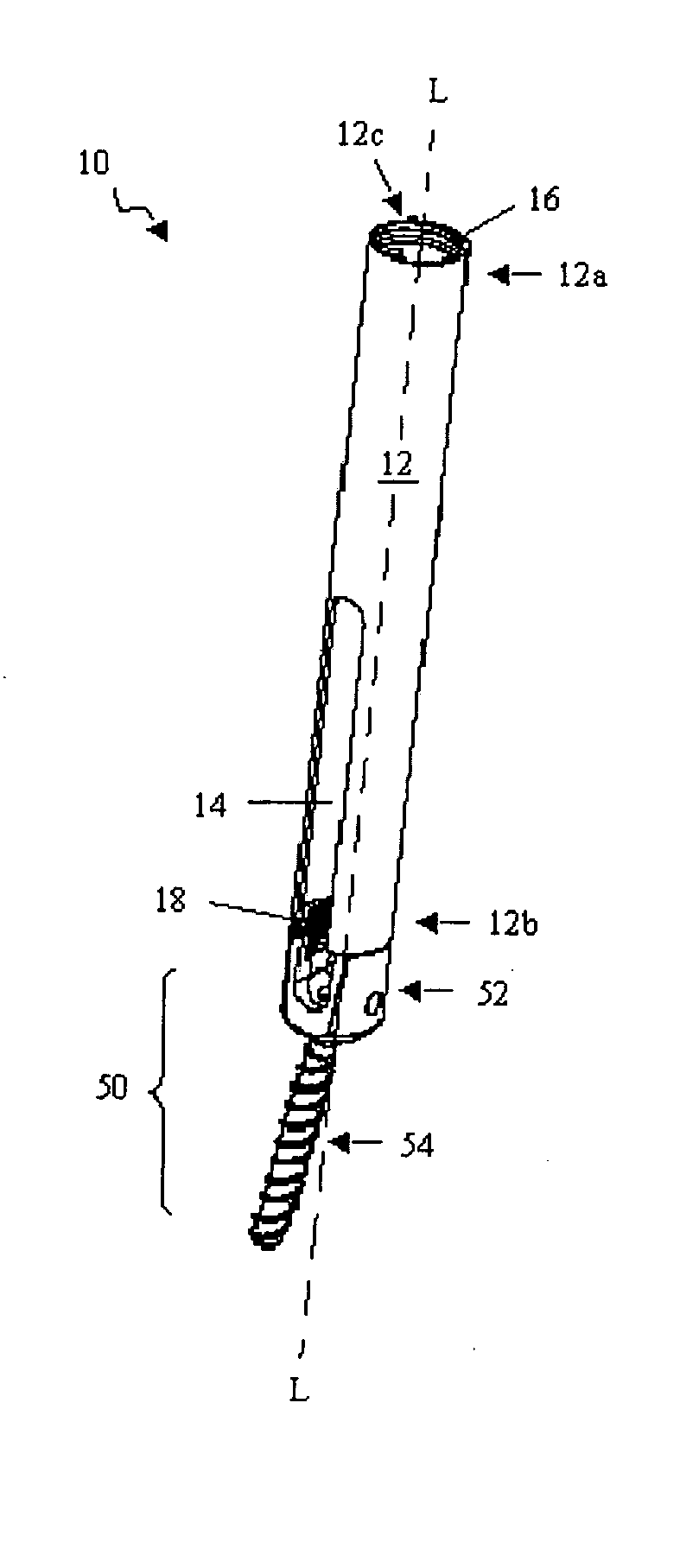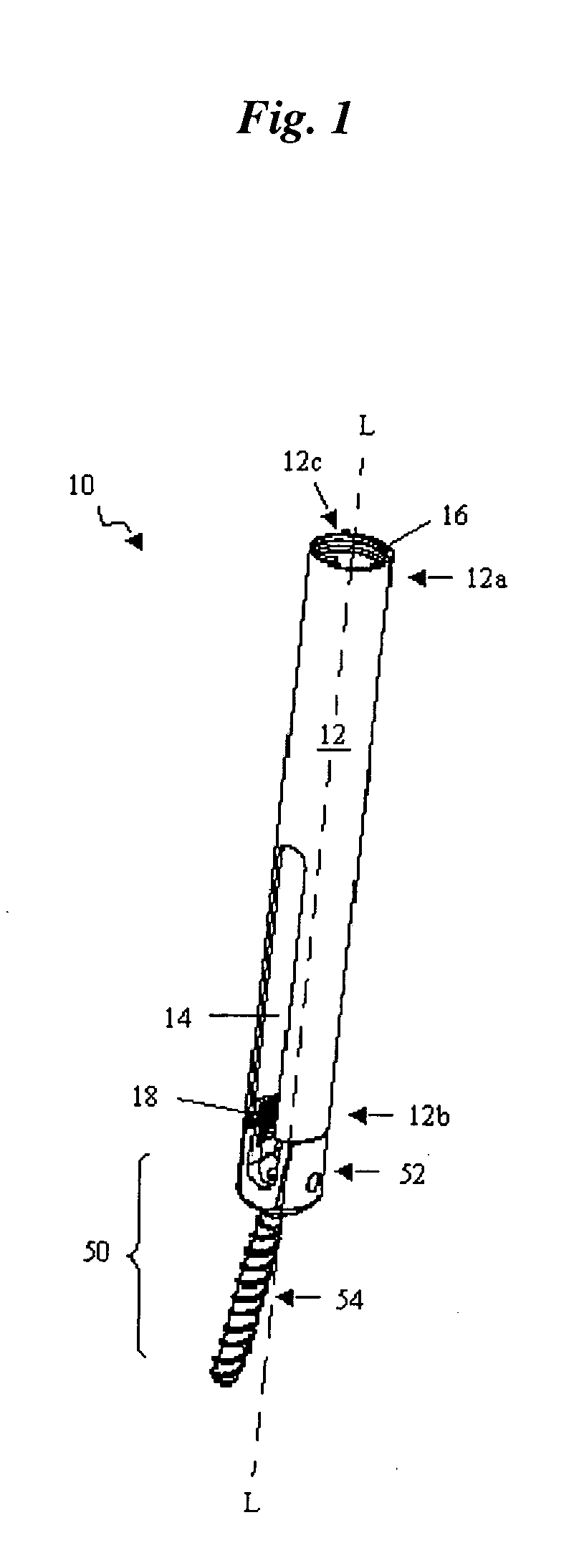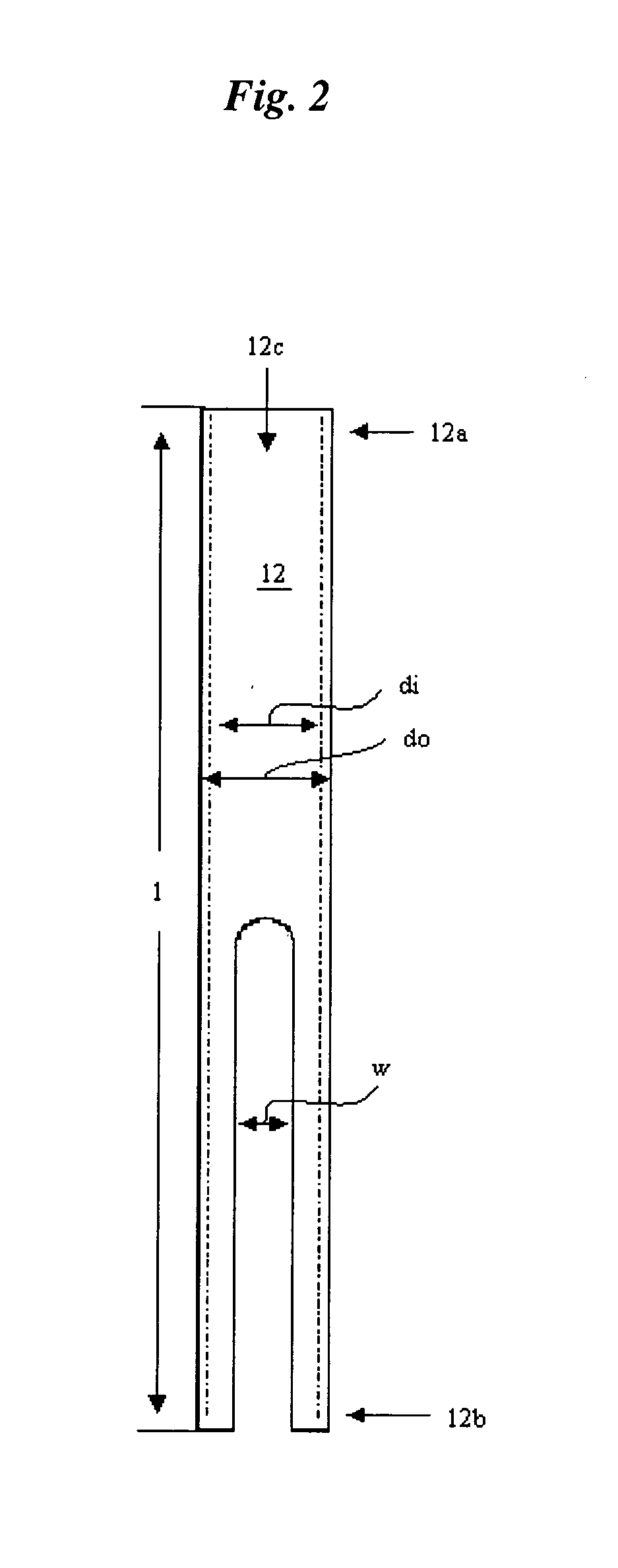Methods and devices for minimally invasive spinal fixation element placement
a spinal fixation element and minimally invasive technology, applied in the field of spinal surgery tools, can solve the problems of increasing patient trauma and recovery time, significant damage to surrounding tissue and muscle, undesired lengthening of surgical procedures,
- Summary
- Abstract
- Description
- Claims
- Application Information
AI Technical Summary
Benefits of technology
Problems solved by technology
Method used
Image
Examples
Embodiment Construction
[0032] The present invention provides minimally invasive methods and devices for introducing a spinal fixation element into a surgical site in a patient's spinal column. In general, the method involves advancing a spinal fixation element in a lengthwise orientation along a minimally invasive pathway that extends from a minimally invasive percutaneous incision to a spinal anchor site. In an exemplary embodiment, a percutaneous access device is used to create the minimally invasive pathway for receiving the spinal fixation element and for delivering the fixation element to a spinal anchor site. The spinal fixation element is preferably inserted through a lumen in the percutaneous access device in a lengthwise orientation, such that the spinal fixation element is oriented substantially parallel to a longitudinal axis of the percutaneous access device. As the spinal fixation element approaches or reaches the distal end of the pathway, the spinal fixation element can be manipulated to or...
PUM
 Login to View More
Login to View More Abstract
Description
Claims
Application Information
 Login to View More
Login to View More - R&D
- Intellectual Property
- Life Sciences
- Materials
- Tech Scout
- Unparalleled Data Quality
- Higher Quality Content
- 60% Fewer Hallucinations
Browse by: Latest US Patents, China's latest patents, Technical Efficacy Thesaurus, Application Domain, Technology Topic, Popular Technical Reports.
© 2025 PatSnap. All rights reserved.Legal|Privacy policy|Modern Slavery Act Transparency Statement|Sitemap|About US| Contact US: help@patsnap.com



